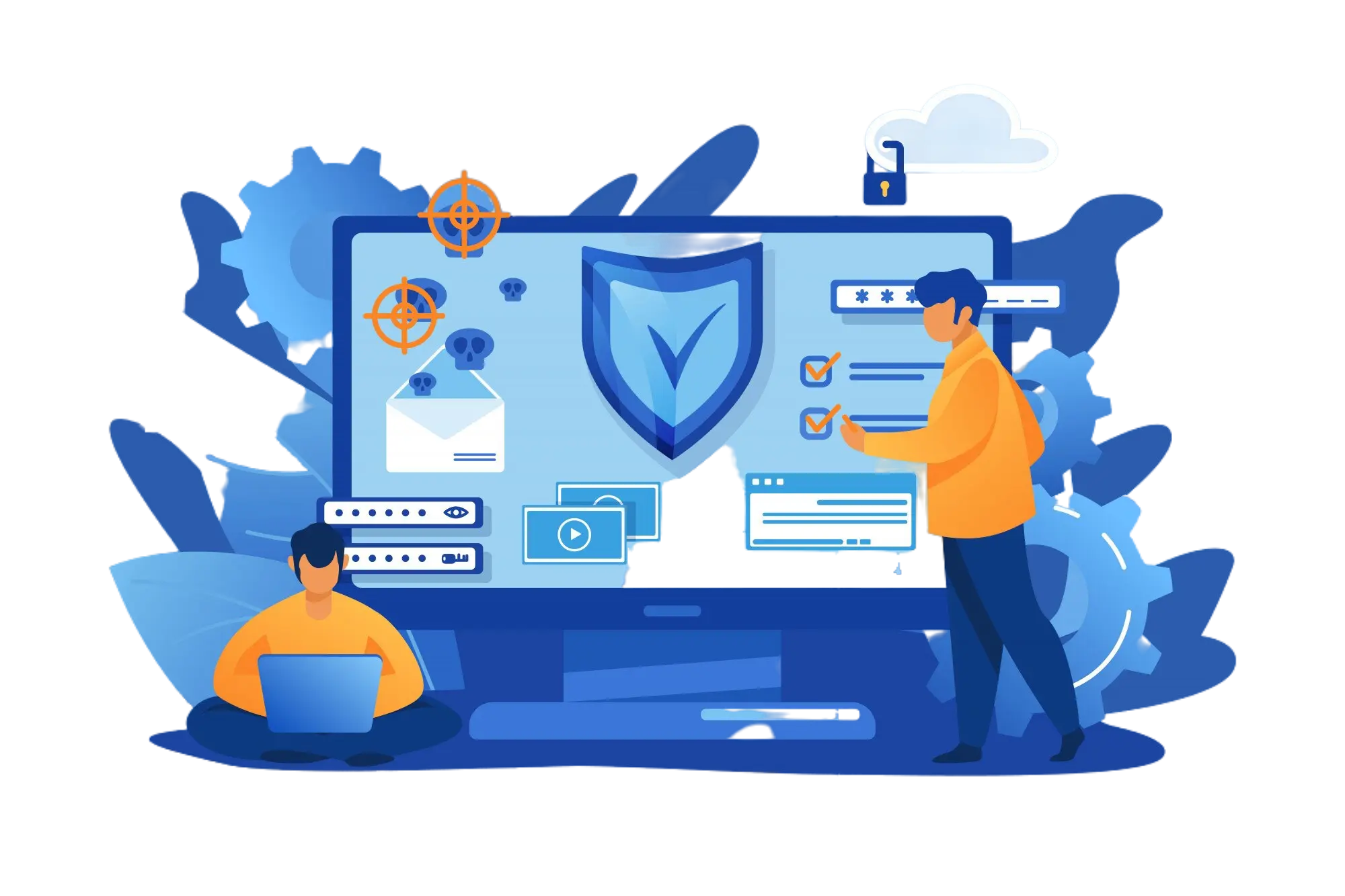Cybersecurity Best Practices in Managed IT Services

In an era where digital threats are pervasive and constantly evolving, robust cybersecurity is a cornerstone of effective IT management. Businesses today, irrespective of their size, are increasingly turning to managed IT services to fortify their cybersecurity posture. This article delves into cybersecurity best practices within the realm of managed IT services, providing insights into how organizations can navigate the complex landscape of cyber threats.
Understanding the Cybersecurity Landscape:
The cybersecurity landscape is characterized by a myriad of threats, including malware, ransomware, phishing attacks, and more. Managed IT services play a crucial role in safeguarding businesses against these threats through a combination of proactive measures and responsive strategies.
1. Continuous Monitoring and Threat Detection:
Managed IT services involve constant monitoring of IT environments to detect any unusual activities or potential security breaches. This real-time monitoring allows for swift identification and response to emerging threats.
2. Robust Endpoint Security:
Endpoints, including devices such as computers, laptops, and mobile devices, are common targets for cyberattacks. Managed IT services implement robust endpoint security solutions, including antivirus software, firewalls, and intrusion detection systems.
3. Regular Security Audits and Assessments:
Periodic security audits and assessments are integral to identifying vulnerabilities within the IT infrastructure. Managed IT service providers conduct thorough assessments to pinpoint weaknesses and develop strategies for remediation.
4. Security Patch Management:
Regularly updating and patching software is crucial for closing potential security gaps. Managed IT services implement effective patch management practices to ensure that all systems are up to date with the latest security patches.
5. Data Encryption and Backup:
Data encryption adds an additional layer of protection, especially for sensitive information. Managed IT services often implement encryption protocols for data in transit and at rest. Additionally, regular data backups are conducted to ensure data recovery in the event of a cyber incident.
6. Multi-Factor Authentication (MFA):
Implementing multi-factor authentication is a best practice to enhance access control. Managed IT services often recommend and implement MFA to add an extra layer of identity verification beyond passwords.
7. Employee Training and Awareness:
Human error remains a significant factor in cybersecurity incidents. Managed IT services emphasize employee training and awareness programs to educate staff about potential threats, phishing schemes, and best practices for maintaining a secure digital environment.
8. Incident Response Planning:
In the event of a cybersecurity incident, having a well-defined incident response plan is crucial. Managed IT services work with organizations to develop and test incident response plans to ensure a swift and effective response to security breaches.
9. Compliance with Industry Regulations:
Depending on the industry, businesses may be subject to specific cybersecurity regulations. Managed IT services assist organizations in understanding and complying with industry-specific regulations to avoid legal and financial repercussions.
10. Collaboration with Cybersecurity Experts:
Managed IT service providers often collaborate with cybersecurity experts and stay abreast of the latest threats and trends. This collaboration ensures that businesses benefit from the expertise of professionals dedicated to understanding and mitigating cybersecurity risks.
11. Network Security and Firewalls:
Securing the network infrastructure is paramount in preventing unauthorized access. Managed IT services deploy and manage robust firewalls, intrusion prevention systems, and other network security measures.
12. Regular Security Training and Drills:
Continuous training and simulated drills are essential components of cybersecurity best practices. Managed IT services conduct regular training sessions and drills to ensure that employees are prepared to respond effectively to security incidents.
13. Integration of Advanced Technologies:
Managed IT services leverage advanced technologies such as artificial intelligence and machine learning to enhance cybersecurity. These technologies enable predictive analysis and proactive threat detection.
Conclusion:
In conclusion, cybersecurity best practices within the realm of managed IT services encompass a holistic and proactive approach to safeguarding digital assets. From continuous monitoring and threat detection to employee training and collaboration with cybersecurity experts, the multifaceted nature of these practices reflects the complexity of the cybersecurity landscape.
As businesses increasingly rely on managed IT services for their cybersecurity needs, the synergy between technological innovation and human expertise becomes a powerful force in fortifying defenses against evolving cyber threats. The key lies not only in implementing these best practices but also in fostering a cybersecurity culture that permeates every level of an organization.
As technology evolves, so do cyber threats. Managed IT services, with their focus on staying ahead of the curve, stand as a reliable partner in the ongoing battle to secure the digital landscape.



